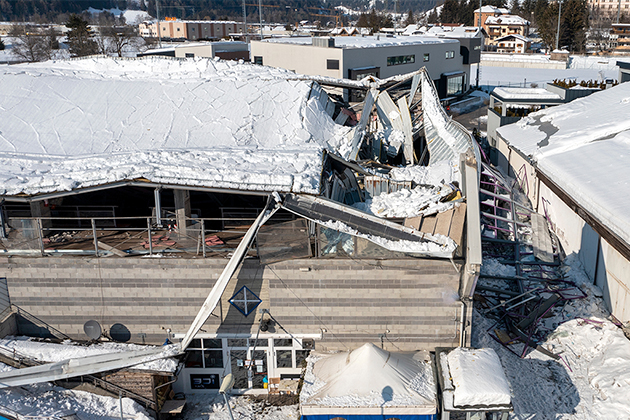
Winter can be the most challenging season of the year for risk management. Even organizations located in warmer climates can run into significant challenges associated with cooler temperatures. With another two months of winter remaining in the Northern Hemisphere, organizations need to maintain or even enhance their preparation measures to address some of the biggest cold weather risks.
The following tips can help any enterprise mitigate physical and property risks, minimize the number of insurance claims they make, and keep their people safe this winter season:
Prepare vehicles for winter weather
To both keep drivers safe and avoid costly repairs, vehicles need to be ready for colder weather. Organizations should:
- Change the windshield wiper fluid. Switch to fluid that can withstand subzero temperatures, and regularly check windshield wipers to ensure they are free of cracks and tears.
- Check tire pressure regularly. Maintaining tire pressure is key to help ensure vehicles can maintain optimal grip and performance.
- Test the battery. When the weather becomes colder, batteries are more likely to fail.
- Keep an eye on the gas tank. Gas tanks are more likely to freeze when they are nearly empty, so drivers should make sure the tank is always at least half full.
- Use the right engine oil. Oil thickens as the temperature drops, which makes it harder for the engine to run smoothly. All organizations that operate vehicles should check the owner’s manual to learn which oil to use in cold weather.
- Make sure the rear-window defroster is working. Visibility from the back windows is just as important as the front windows, especially during the winter. The rear-window defroster also is not used as much during the summer, so it may have fallen into disrepair.
Protect pipes from freezing
Frozen pipes can lead to steep repair bills. To best mitigate the risk, organizations should:
- Set interior thermostats to no lower than 55°F.
- Insulate areas such as attics, crawl spaces and between wall partitions to help the building retain heat so the indoor temperature never drops to a dangerous level.
- Purchase and install special insulation to wrap pipes in uninsulated or particularly cold areas of the building.
- Consider shutting off the water line when the building will be unoccupied for a long period of time.
- Use a sensor program to send alerts when there is excess water in a given area or a significant drop in indoor temperature. Alerts allow your maintenance staff time to respond and prevent damage from occurring. For example, after Winter Storm Elliott in December 2022, insurer Church Mutual found claims from customers without a sensor program were approximately 50% higher than among those who had sensors.
Prevent ice dams and leaks
Ice dams are created when heavy snow on the roof melts during the day and then refreezes as temperatures drop overnight. To prevent ice dams, inspect the roof before the first snowfall, securing any loose shingles and repairing breaks in flashing seals. Be sure to keep gutters, drains and downspouts free of debris that may restrict proper flow.
Prevent snow and ice accumulation on the roof
A roof should be able to withstand the expected snow load for its location, however, it may need to be monitored to remove snow loads and ice from vulnerable roof sections once snow begins to fall. Keep in mind that 10 to 12 inches of new snow, three to five inches of packed or old snow, or one inch of ice all add about five pounds per square foot on a roof.
Monitor sidewalks and parking lots
Take the following steps to keep people from slipping near the building:
- Keep bags of sand or salt near doors. Having salt or sand nearby makes it easy for anyone who notices an icy patch to take care of it right away, no matter when icy conditions crop up.
- Include the roof in the regular snow-clearing process. Regular roof maintenance can prevent snow or slush from dripping down and freezing on the sidewalk below.
- Establish a process for clearing ice and snow. When conditions become snowy or slippery, ensure that staff members, volunteers or an outside company are ready to remove ice and snow. If snow falls when people are on site, those workers should clear snow at regular intervals.
Provide employees with winter safety tips
Just as it is important to keep the property safe during the winter, it is critical to ensure people who use the property have information to protect themselves. For example, provide guidance for employee safety like the following tips to avoid falling on the ice:
- Walk, do not run, to avoid “black ice” that could cause serious injury.
- Take short, shuffling steps to avoid falling.
- Select proper footwear, such as shoes or boots that have rubber or neoprene composite soles.
- Take care when entering or exiting vehicles.
